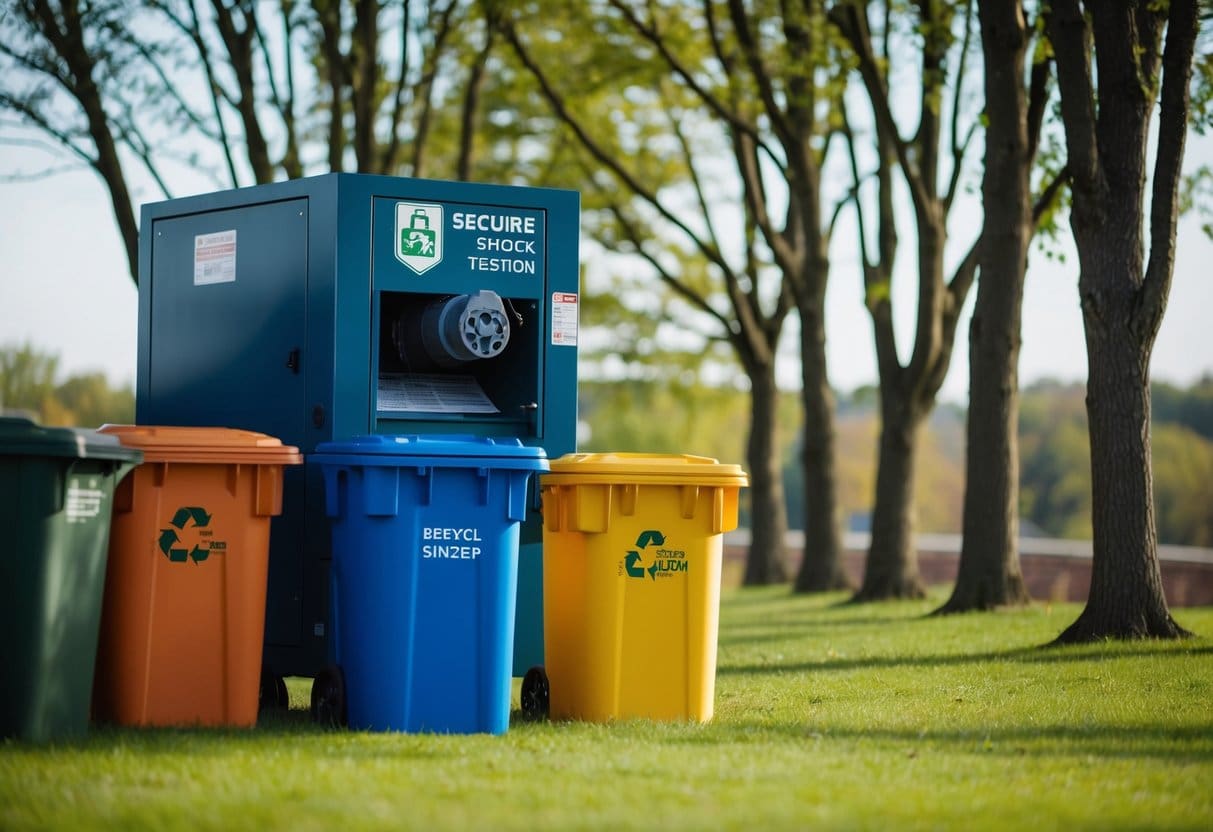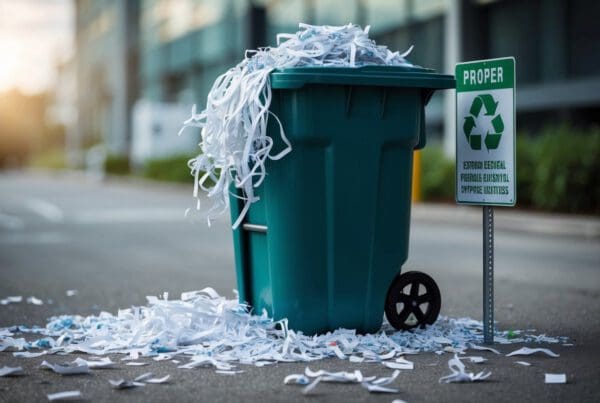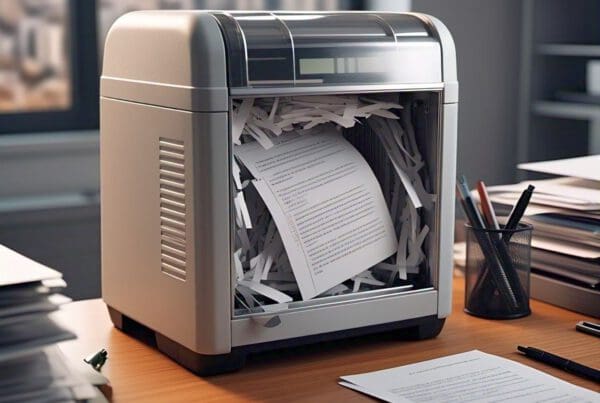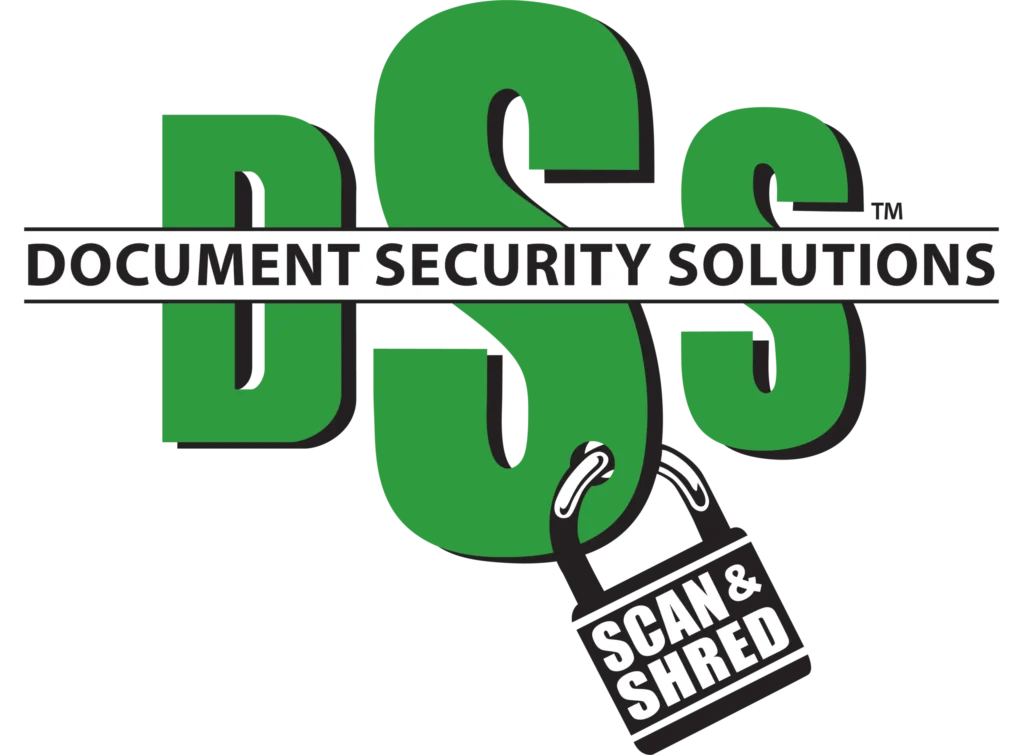Understanding Environmentally Responsible Shredding
Environmentally responsible shredding is key to minimizing waste and promoting recycling. Sustainable practices help us reduce the impact on ecosystems and conserve resources.
Importance of Sustainable Shredding Practices
Sustainable shredding helps us protect the environment. By using energy-efficient machines, we cut down on electricity use. Eco-friendly shredding also involves using machines that produce fewer emissions. Regular maintenance of shredders extends their life, preventing waste.
Beyond machine use, managing paper waste is crucial. We should aim to reduce the amount of paper we shred. Encouraging digital documentation minimizes traditional paper use. When shredding is necessary, we ensure that all shredded material is sent for recycling.
Environmental Impact of Shredding
The environmental impact of shredding can be significant if not managed properly. Shredded paper contributes to waste, and if not recycled, it adds to landfill problems. Our goal is to limit this waste and focus on recycling.
Energy consumption from shredding machines also contributes to environmental issues. By ensuring machines operate efficiently, we can reduce our carbon footprint. Opting for sustainable shredding methods can help us lessen air and water pollution caused by traditional waste disposal methods.
The Role of Recycling in Shredding
Recycling plays a vital role in environmentally responsible shredding. Properly recycled shredded paper can be repurposed, conserving raw materials. This reduces the need to produce new paper, saving trees and water.
We must establish clear recycling plans for shredded materials. Partnering with recycling centers ensures the shredded paper is processed correctly. Educating ourselves and others about recycling practices will help us stay committed to sustainability. Emphasizing the recycling aspect of shredding showcases our commitment to eco-friendly practices and long-term resource conservation.
Implementing Sustainable Shredding Operations
We aim to run our shredding operations in an eco-friendly way. By choosing the right partners and reducing emissions, we can make a positive impact. Recycling is key in this process to ensure sustainability.
Selection of Shredding Services
When selecting shredding services, it’s important for us to choose ones that align with our sustainability goals. We should look for services that prioritize low emissions. Service providers who use energy-efficient machines lower our environmental impact.
Choosing local shredding businesses can further reduce greenhouse gas emissions by cutting down on long transportation. Asking about a company’s commitment to sustainability helps us make sure they recycle shredded materials properly. These practices align with our goal to be environmentally responsible.
Emission Standards and Greenhouse Gas Reduction
Meeting emission standards is critical for reducing greenhouse gases in our operations. We must make sure our equipment meets or exceeds current low emissions standards. Adopting these practices minimizes our carbon footprint.
Investing in electric-powered machines rather than gas-powered ones is one way to achieve lower emissions. We also conduct regular maintenance to increase efficiency and prevent excessive emissions. By following these steps, we achieve cleaner air and a more sustainable business model.
Document Disposal and Recycling Process
The document disposal and recycling process play a crucial role in our shredding operations. After shredding, recycling the paper is necessary to keep it from landfills. We must work with partners who have efficient recycling systems.
Sorting materials carefully can increase the quality of recycled products. Adhering to this ensures our waste contributes to new, useful items. Training our team on best recycling practices leads to better results and supports our eco-friendly objectives.
Using these methods, we contribute positively to the environment and achieve our green goals.
Shredding Best Practices for Data Security
To maintain data security when shredding, we focus on safeguarding sensitive information, ensuring secure destruction, and adhering to data protection regulations. Our practices help prevent identity theft and data breaches while meeting compliance standards.
Protecting Sensitive Information
We prioritize securing sensitive information to prevent it from falling into the wrong hands. This involves identifying and categorizing data based on its sensitivity, ensuring that only authorized personnel have access to it.
Best Practices:
- Use locked bins for disposal.
- Conduct regular audits to classify data.
- Train employees on data handling.
By implementing these measures, we reduce the risk of unauthorized access and potential security breaches, protecting both our organization and clients.
Secure Destruction and Compliance
Secure destruction is crucial for destroying classified documents. We follow recognized standards to guarantee information is irretrievable. This involves using certified shredding services for physical destruction.
Steps We Follow:
- Collect documents in a secure environment.
- Employ cross-cut shredding methods.
- Obtain a certificate of destruction.
These methods assure that our data disposal process adheres to industry compliance standards, reducing risks linked to identity theft and data leaks.
Data Protection Regulations
Adhering to data protection regulations is vital for maintaining trust and avoiding legal issues. We comply with laws like GDPR and HIPAA, which set guidelines for handling and disposing of personal data.
Key Compliance Measures:
- Conduct data audits regularly.
- Keep records of destruction processes.
- Implement robust privacy policies.
Following these regulations helps us protect sensitive information, maintaining our reputation, and ensuring that we meet legal obligations.
Eco-Friendly Shredding Technologies and Processes
Eco-friendly shredding is vital for reducing waste and conserving resources. We’ll review innovations in shredder machinery, energy conservation during document destruction, and how recycled paper products contribute to the circular economy. These practices help us minimize environmental impact and move towards sustainability.
Innovations in Shredder Machinery
Recent advancements in shredder machinery focus on efficiency and sustainability. Manufacturers design shredders that use less energy and work faster. Smart shredders can sort paper types and adjust settings automatically, reducing waste and energy consumption.
Such technology allows us to shred larger volumes with minimal effort. Additionally, some models are equipped with particle size control features, which ensure optimal repulping in recycling facilities.
Energy Conservation in Document Destruction
Energy conservation is a crucial part of sustainable shredding. New shredding trucks use hybrid technology to decrease fuel consumption and emissions. By implementing energy-efficient processes, we conserve energy during large-scale document destruction events.
Offices can also optimize their shredding schedules, reducing the need for frequent collections. By scheduling shredding during off-peak power hours, we can further decrease energy use and its impact on the environment.
Recycled Paper Products and Circular Economy
Recycled paper products are integral to a circular economy. The process starts with shredding paper into small fragments, making it easier to recycle. At a paper mill, recycled particles are transformed into new paper products, reducing the demand for virgin materials.
Incorporating recycled paper in office supplies and packaging supports sustainability. This practice not only cuts waste but also prolongs the lifecycle of materials, upholding the principles of a circular economy.
Strategies for Reducing Paper Waste in Businesses
Reducing paper waste in businesses is vital for environmental responsibility. We can achieve this by minimizing paper clutter with efficient shredding, including shredding in our sustainability goals, and ensuring the issuance of recycling certificates.
Minimizing Paper Clutter with Efficient Shredding
Efficient shredding helps manage paper clutter in offices. When we regularly shred unneeded documents, we reduce the amount of paper piling up. This practice also ensures that sensitive information is securely handled.
Using modern shredders that are energy-efficient can assist in reducing our carbon footprint. When we choose machines with better power performance, we protect natural resources. Encouraging digital documentation can further minimize paper use in our workplace.
Incorporating Shredding in Sustainability Goals
Shredding should be part of our broader sustainability goals. By doing so, we actively contribute to waste management and environmental stewardship. We can create policies that balance paper use and document destruction, aligning with our commitment to sustainability.
Adopting paperless solutions, such as electronic communication and digital file storage, further supports our aims. When we reduce dependency on paper, we lower deforestation rates, preserving our natural environment.
Issuance of Recycling Certificates
Recycling certificates serve as proof of our commitment to environmental responsibility. Partnering with certified recycling companies ensures that shredded paper is properly processed. These certificates can also boost our business’s reputation by showcasing our dedication to sustainability.
Keeping records of recycling certificates can help us track our progress. They demonstrate our efforts in reducing waste and adhering to ecological guidelines. By promoting transparency, we encourage others to adopt responsible practices.





